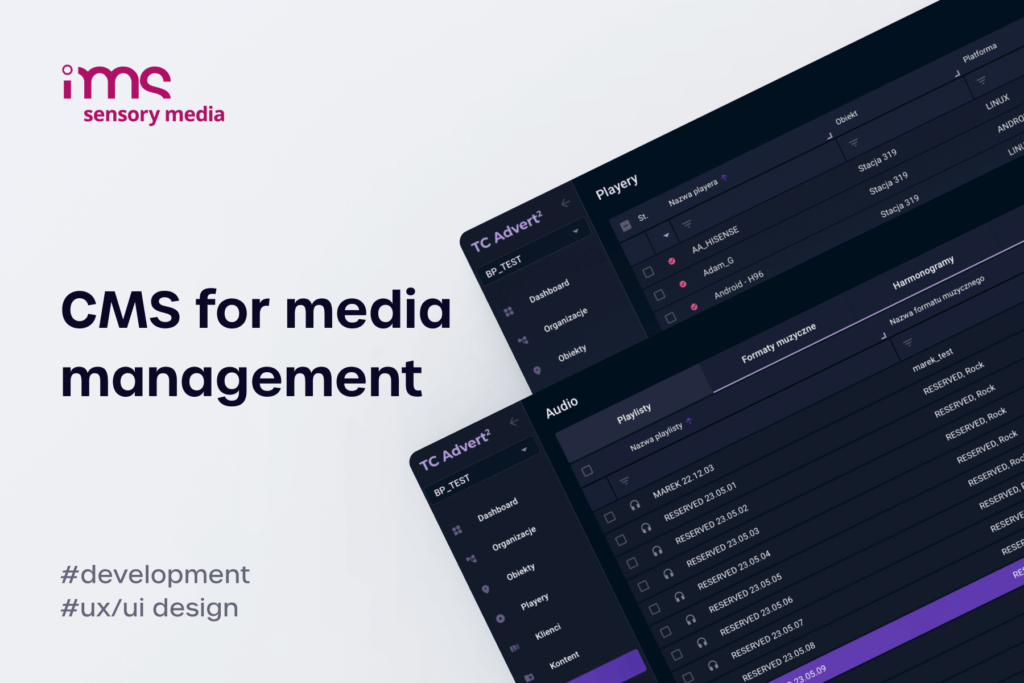An effective SSP integration can significantly improve how digital out-of-home campaigns are delivered and managed. BroadSign and IMS Sensory Media joined forces to connect programmatic capabilities with a large-scale screen network. By integrating the two systems, advertisers gained faster access to premium inventory, while publishers streamlined their sales processes.
The case study highlights the technical steps taken to align both platforms, including data synchronization, campaign automation, and reporting consistency. This collaboration demonstrates how well-executed integrations can remove operational barriers and unlock new revenue opportunities in digital signage.
Understanding SSP and BroadSign
In the world of programmatic advertising, the concept of a Supply Side Platform (SSP) plays a vital role in optimizing ad inventory and maximizing revenue. BroadSign, a renowned player in this space, provides an effective SSP that streamlines transactions for digital signage, enhancing the advertisement ecosystem for content creators and advertisers alike.
What is an SSP in programmatic advertising?
An SSP, or Supply Side Platform, plays a central role in programmatic advertising by helping publishers monetize their digital inventory more effectively. It acts as the backbone of automated ad sales, ensuring that available space is sold in the most efficient and profitable way. By integrating with demand-side platforms (DSPs) and ad exchanges, SSPs allow publishers to connect with a wide range of advertisers in real time.
Key functions of an SSP include:
- Managing and organizing available ad inventory.
- Enabling real-time bidding to maximize competition and pricing.
- Providing access to a broad pool of advertisers through integrations with DSPs and ad exchanges.
- Offering transparency and reporting on performance and revenue.
- Applying rules and controls to protect brand safety and user experience.
In short, an SSP ensures that publishers get the highest value for their digital signage project while maintaining control over how and when ads are displayed.
BroadSign as a leading SSP for digital signage
BroadSign stands at the forefront of digital signage solutions, offering an advanced SSP tailored to the specific requirements of screen networks. It aggregates inventory from multiple publishers, making it accessible to a wide pool of advertisers through programmatic channels.
The platform facilitates real-time bidding, ensuring that every available slot is sold at the best possible price. BroadSign also provides detailed targeting, scheduling, and reporting features, giving screen owners full control over how their inventory is monetized. This combination of automation and transparency makes it one of the most trusted SSPs in the digital signage ecosystem.
Why integrate SSP with a CMS?
Integrating an SSP like BroadSign with a Content Management System (CMS) ensures that every available advertising slot is automatically monetized. The CMS manages the schedule of planned campaigns, and whenever gaps appear between booked content, these time slots can be defined and offered through the SSP for bidding by the screen manager.
At the same time, advertisers gain access to highly precise opportunities that match the exact duration of available slots. The result is a streamlined workflow that combines reliable content delivery with the dynamic revenue potential of programmatic advertising.

The integration process between BroadSign and IMS Sensory Media CMS
The integration process between BroadSign and the IMS Sensory Media CMS is critical for ensuring efficient ad delivery and management. By facilitating a robust connection, it enables advertisers and publishers to collaborate more effectively, maximizing the impact of their media strategies.
Data provided by screen owners
Screen owners provide a wide range of data that enables the SSP to evaluate inventory and optimize ad placements with precision. This information determines when, where, and how ads can run, ensuring that campaigns are both technically compatible and contextually relevant. The richer and more accurate the data, the more efficiently the SSP can run auctions and maximize the value of each slot.
Typical data provided by screen owners includes:
- Technical details: interactive display resolution, supported file formats, aspect ratio, brightness, and orientation.
- Scheduling information: exact availability during specific hours, defined content blocks, and blackout periods.
- Audience metrics: estimated number of viewers, traffic patterns by time of day, and potential reach.
- Location data: GPS coordinates, type of venue (e.g., shopping mall, transport hub, office building), and environmental context.
- Performance history: average impressions per campaign, previous fill rates, and playback reliability.
- Commercial parameters: minimum bid requirements, pricing rules, and any restrictions on ad categories.
By providing this comprehensive dataset, screen owners give the SSP the ability to run precise real-time bidding, attract a wider pool of advertisers, and ultimately generate higher revenues from every available slot.


Auction workflow and VAST delivery
An effective auction workflow facilitated by SSP integration ensures that ads are dynamically selected and delivered based on real-time demand. Screen owners provide detailed parameters about their displays -such as resolution, availability during certain hours, and estimated audience size - and these inputs determine how each slot is auctioned. Advertisers then bid for those slots, and the highest bid secures the placement.
Auction workflow in practice:
- Screen owners register inventory with key parameters (resolution, availability windows, audience estimates).
- The SSP lists these slots in real time for advertisers.
- Advertisers submit bids programmatically through demand-side platforms (DSPs).
- The SSP runs the auction and selects the winning bid.
- The winning creative is returned for playback according to the defined slot.
Once a campaign wins the auction, the creative is delivered using VAST (Video Ad Serving Template). VAST is an industry-standard XML format that describes how video ads should be served across platforms, ensuring compatibility and reliable measurement.
Key elements of a VAST file include:
- Media file reference: link to the video file to be played.
- Duration: exact runtime of the video asset.
- Tracking tags: URLs for impression tracking, quartile tracking, and click events.
- Companion creatives: optional images or banners that may appear alongside the video.
- Error reporting: standardized codes that indicate if the ad failed to play.
In this project, the XML responses were parsed using Google’s IMA SDK, ensuring consistent interpretation of VAST files across all players. This standardized flow guarantees that ads are displayed correctly, tracked accurately, and fully synchronized with the CMS schedule
Role of the CMS and players in SSP integration
The Content Management System (CMS) acts as the central coordinator that ensures advertising campaigns and scheduled media run in sync. In the CMS, we define only a time block during which a BroadSign campaign may run – at this stage we don’t know which media file (if any) will be available. In practice, we set a rule: “at these times, ask BroadSign if there’s an asset for us.”
At the scheduled moment, the player/application queries the BroadSign API, and the response arrives as a VAST file – only then do we learn whether there is content to play, along with its duration and tracking elements for reporting, or that no asset is available. If content is provided, the player downloads it, buffers it in advance, and waits for the scheduled slot. When the moment arrives, it launches the campaign precisely on time, ensuring seamless integration with the rest of the content schedule.

Technical challenges and implemented solutions - SSP integration
While the benefits of SSP integration are substantial, several technical challenges can arise during the implementation process. Addressing these challenges is essential to ensure a seamless ad experience and maximize the effectiveness of digital signage advertising campaigns.
Managing latency in players
Latency is a critical factor in digital signage playback, as even small delays can disrupt campaigns and create visible gaps in the content flow. During implementation, we observed that VAST ads were not always starting on time, despite being given enough time to buffer. The challenge was that these delays were inconsistent — sometimes half a second, other times up to two seconds.
How we addressed latency issues:
- Monitored playback behavior across multiple devices to identify delay patterns.
- Discovered that latency was not a fixed value but varied dynamically between playbacks.
- Calculated the median delay (instead of the average) to eliminate outliers caused by extreme cases.
- Adjusted the start of VAST campaigns by this median value, ensuring ads began exactly when expected.
- Eliminated black frames and improved continuity between scheduled content and ad playback.
By applying this adaptive timing method, we ensured that all campaigns ran smoothly, maintaining a professional viewer experience without interruptions.

Reporting and transparency - SSP integration
Because of the external integration with BroadSign, the number of potential issues that could prevent content from playing — or cause it to display incorrectly — increased significantly. Failures could originate from multiple sources, such as missing auction winners, misconfigured settings, VAST delivery errors, or even player-side malfunctions.
To manage this complexity, we developed a detailed reporting system that tracked every step of the process and identified the exact cause of any issue. The system categorized errors clearly, allowing operators to distinguish between SSP-related problems, CMS configuration mistakes, or device-level failures. This level of transparency not only simplified troubleshooting but also gave publishers and advertisers confidence that campaigns were being monitored and validated at every stage.

FAQ - SSP integration
What is the difference between SSP and DSP?
In programmatic advertising, two core technologies work hand in hand to automate the buying and selling of digital ad space: the Supply Side Platform (SSP) and the Demand Side Platform (DSP). Although they are closely connected, each serves a distinct role in the ecosystem.
SSP (Supply Side Platform):
- Enables publishers to manage and sell their available ad inventory through real-time auctions.
- Maximizes revenue by exposing inventory to multiple demand sources while ensuring control over pricing, scheduling, and ad quality.
DSP (Demand Side Platform):
- Allows advertisers to purchase ad space programmatically across multiple publishers and networks.
- Uses targeting, bidding strategies, and data insights to ensure ads reach the right audience at the best price.
Together, SSPs and DSPs create a balanced marketplace where publishers gain higher yields for their inventory and advertisers achieve more efficient, data-driven campaign delivery.
How does VAST improve programmatic advertising in SSP integration?
VAST, or Video Ad Serving Template, enhances programmatic advertising by providing a universal XML standard for delivering video ads across platforms, players, and devices. It defines critical elements such as the media file, duration, and tracking tags, ensuring that campaigns are displayed correctly and measured accurately. For advertisers, this means greater consistency in ad delivery, while publishers benefit from reduced compatibility issues and simpler integrations. By embedding VAST into SSP workflows, both sides achieve more reliable performance and higher engagement rates.
Can SSP integration work with any CMS?
Yes, SSP integration can be tailored to work with any CMS, though the effectiveness may vary depending on the specific capabilities of both systems. By ensuring compatibility between the SSP and CMS, brands can enjoy the benefits of streamlined ad management and optimized revenue generation, making it an essential consideration for digital signage networks.







